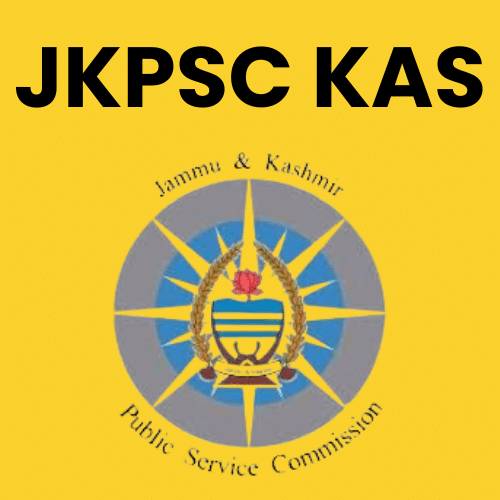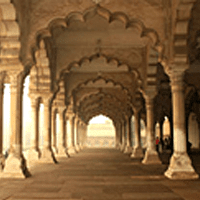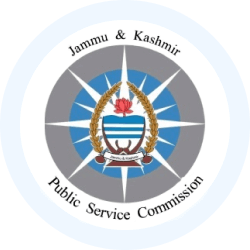Best Study Material for JKPSC KAS (Jammu and Kashmir) Exam
JKPSC KAS (Jammu and Kashmir) Exam > JKPSC KAS (Jammu and Kashmir) Notes > JKPSC KAS (Jammu and Kashmir): Preparation Course > Agriculture and Irrigation in Jammu and Kashmir
Agriculture and Irrigation in Jammu and Kashmir | JKPSC KAS (Jammu and Kashmir): Preparation Course PDF Download
| Download, print and study this document offline |
Please wait while the PDF view is loading
Page 1 AGRICULTUREAND IRRIGATIONIN JAMMUANDKASHMIR Essentially a mountainous state, Jammu and Kashmir has only 30% of the reporting area under cultivation yet agriculture supports around 70% of the population. Therefore, the state has an agrarian economy. The State Government has initiated many schemes to boost its agricultural economy. Theclimaticdiversityofthestatefromsub-tropicaltotemperatetocoldprovidesa varietyofcrops,fruits,vegetablesandflowers.However,thecontributionof agricultureinStateGrossDomesticProductis15.8percent. Agro-Climatic Zones Jammu and Kashmir is divided intofour major agro-climatic zones: 1. Low altitude sub-tropical zone (JK-1) 2. Mid to high altitude intermediate zone (JK-2) 3. Mid to high altitude temperate zone (JK-3) 4. Cold arid zone (JK-4) 1. Low Altitude Sub-tropical Zone (JK-1) Thiszoneischaracterisedbymonsoon,concentrationofprecipitation,hotspellof summer,relativelydrybutpronouncedwinter.Itcomprises ofwholeJammudistrict andlowerpartsofKathua,Udhampur,PoonchandRajouridistricts.Maximum rainfallinthiszoneisreceivedduringJuly-September.Themeanheightabovesea levelrangesfromlessthan300mto1350m.Hottestmonthsare May,JuneandJuly andcoldestmonthsareDecember,JanuaryandFebruary.Itssub-zoneisouterhills, withslightlyhigherelevationthanthesub-tropicalzone.Alluvialsoilisfoundin thiszone.Maize,wheat,cerealsaregrownhere. Page 2 AGRICULTUREAND IRRIGATIONIN JAMMUANDKASHMIR Essentially a mountainous state, Jammu and Kashmir has only 30% of the reporting area under cultivation yet agriculture supports around 70% of the population. Therefore, the state has an agrarian economy. The State Government has initiated many schemes to boost its agricultural economy. Theclimaticdiversityofthestatefromsub-tropicaltotemperatetocoldprovidesa varietyofcrops,fruits,vegetablesandflowers.However,thecontributionof agricultureinStateGrossDomesticProductis15.8percent. Agro-Climatic Zones Jammu and Kashmir is divided intofour major agro-climatic zones: 1. Low altitude sub-tropical zone (JK-1) 2. Mid to high altitude intermediate zone (JK-2) 3. Mid to high altitude temperate zone (JK-3) 4. Cold arid zone (JK-4) 1. Low Altitude Sub-tropical Zone (JK-1) Thiszoneischaracterisedbymonsoon,concentrationofprecipitation,hotspellof summer,relativelydrybutpronouncedwinter.Itcomprises ofwholeJammudistrict andlowerpartsofKathua,Udhampur,PoonchandRajouridistricts.Maximum rainfallinthiszoneisreceivedduringJuly-September.Themeanheightabovesea levelrangesfromlessthan300mto1350m.Hottestmonthsare May,JuneandJuly andcoldestmonthsareDecember,JanuaryandFebruary.Itssub-zoneisouterhills, withslightlyhigherelevationthanthesub-tropicalzone.Alluvialsoilisfoundin thiszone.Maize,wheat,cerealsaregrownhere. 2. Mid to High Altitude Intermediate Zone (JK-2) Thiszoneischaracterisedbymonsoon,concentrationofprecipitation,relatively wetter,coldwintersandhighermeanannualrainfall. Thiszoneissub-tropicaltemperatetransitionandcomprisesofthemidandhigh altitudeareasofthePanjaltrap.Itincludesalltheareasaboveouterhills,including thedistrictsofDoda,Poonch,partsofRajouri,Udhampur andKathua. Thesoilsinthiszoneisscatteredandnotthick.Thiszonereceivesrainfallfrom South-WestmonsoonmostlyinsummersandNorth-Westdisturbancesinwinters. Thezonevariesinelevationfrom800to1500minmidaltitude andupto4000min higheraltitude.RiverChenabanditstributariesconstitutethemajordrainagebasin. Itssub-zonemarksthelimitbetweenvalleytemperateandcoldaridzone.Wheat andsugarcanearegrownhere. 3. Mid to High Altitude Temperate Zone (JK-3) Thiszoneexperienceswetandseverewinterswithfrost,snowandrainandrelatively dryandwarmsummer.ThiszoneessentiallycoverstheValley ofKashmir comprisingofthedistrictsAnantnag,Pulwama,Srinagar,Budgam,Baramulla and Kupwara. ThesoilsofKashmirValleyarealluvialinnaturewithirrigatedareaofabout62per cent.Therefore,thiszoneisalsoknownascultivator’sparadise.Thiszonereceives annualrainfallofaround680mm,ofwhichnearly70percentisreceivedinwinter andspringseason(fromDecembertoMay).Theoverallaveragetemperaturein differentmonthsvariesfrom1.2°Cto24.5°C. Theelevationinvalleysvariesfrom1560to1950m.Inmidbeltsitrangesfrom 2400-3000mand4200minsnowboundareas.Ricefollowedbywheat,maizeand sugarcanearegrownhere.Oilseedsarealsogrowninthiszone.Theelevationin valleysvariesfrom1560to1950m.Inmidbeltsitrangesfrom 2400-3000mand 4200minsnowboundareas.Ricefollowedbywheat,maizeandsugarcaneare grownhere.Oilseedsaregrowninthiszone. 4. Cold Arid Zone (JK-4) ThisregionintheNorthernmosttipofAsiansub-continentbetweenKarakoram andGreaterHimalayanrangesandisinterwovenwithruggedmountains.Aridzone comprisesthecoldaridregionofWesternHimalayas,andthe hotaridregionof Indo-GangeticplainsandpeninsularIndia.ThecoldaridregionofWestern HimalayasmainlycomprisesLadakh.Cultivationisverylimitedduetoextreme conditions.Barleyisthemaincropgrownhere. Page 3 AGRICULTUREAND IRRIGATIONIN JAMMUANDKASHMIR Essentially a mountainous state, Jammu and Kashmir has only 30% of the reporting area under cultivation yet agriculture supports around 70% of the population. Therefore, the state has an agrarian economy. The State Government has initiated many schemes to boost its agricultural economy. Theclimaticdiversityofthestatefromsub-tropicaltotemperatetocoldprovidesa varietyofcrops,fruits,vegetablesandflowers.However,thecontributionof agricultureinStateGrossDomesticProductis15.8percent. Agro-Climatic Zones Jammu and Kashmir is divided intofour major agro-climatic zones: 1. Low altitude sub-tropical zone (JK-1) 2. Mid to high altitude intermediate zone (JK-2) 3. Mid to high altitude temperate zone (JK-3) 4. Cold arid zone (JK-4) 1. Low Altitude Sub-tropical Zone (JK-1) Thiszoneischaracterisedbymonsoon,concentrationofprecipitation,hotspellof summer,relativelydrybutpronouncedwinter.Itcomprises ofwholeJammudistrict andlowerpartsofKathua,Udhampur,PoonchandRajouridistricts.Maximum rainfallinthiszoneisreceivedduringJuly-September.Themeanheightabovesea levelrangesfromlessthan300mto1350m.Hottestmonthsare May,JuneandJuly andcoldestmonthsareDecember,JanuaryandFebruary.Itssub-zoneisouterhills, withslightlyhigherelevationthanthesub-tropicalzone.Alluvialsoilisfoundin thiszone.Maize,wheat,cerealsaregrownhere. 2. Mid to High Altitude Intermediate Zone (JK-2) Thiszoneischaracterisedbymonsoon,concentrationofprecipitation,relatively wetter,coldwintersandhighermeanannualrainfall. Thiszoneissub-tropicaltemperatetransitionandcomprisesofthemidandhigh altitudeareasofthePanjaltrap.Itincludesalltheareasaboveouterhills,including thedistrictsofDoda,Poonch,partsofRajouri,Udhampur andKathua. Thesoilsinthiszoneisscatteredandnotthick.Thiszonereceivesrainfallfrom South-WestmonsoonmostlyinsummersandNorth-Westdisturbancesinwinters. Thezonevariesinelevationfrom800to1500minmidaltitude andupto4000min higheraltitude.RiverChenabanditstributariesconstitutethemajordrainagebasin. Itssub-zonemarksthelimitbetweenvalleytemperateandcoldaridzone.Wheat andsugarcanearegrownhere. 3. Mid to High Altitude Temperate Zone (JK-3) Thiszoneexperienceswetandseverewinterswithfrost,snowandrainandrelatively dryandwarmsummer.ThiszoneessentiallycoverstheValley ofKashmir comprisingofthedistrictsAnantnag,Pulwama,Srinagar,Budgam,Baramulla and Kupwara. ThesoilsofKashmirValleyarealluvialinnaturewithirrigatedareaofabout62per cent.Therefore,thiszoneisalsoknownascultivator’sparadise.Thiszonereceives annualrainfallofaround680mm,ofwhichnearly70percentisreceivedinwinter andspringseason(fromDecembertoMay).Theoverallaveragetemperaturein differentmonthsvariesfrom1.2°Cto24.5°C. Theelevationinvalleysvariesfrom1560to1950m.Inmidbeltsitrangesfrom 2400-3000mand4200minsnowboundareas.Ricefollowedbywheat,maizeand sugarcanearegrownhere.Oilseedsarealsogrowninthiszone.Theelevationin valleysvariesfrom1560to1950m.Inmidbeltsitrangesfrom 2400-3000mand 4200minsnowboundareas.Ricefollowedbywheat,maizeandsugarcaneare grownhere.Oilseedsaregrowninthiszone. 4. Cold Arid Zone (JK-4) ThisregionintheNorthernmosttipofAsiansub-continentbetweenKarakoram andGreaterHimalayanrangesandisinterwovenwithruggedmountains.Aridzone comprisesthecoldaridregionofWesternHimalayas,andthe hotaridregionof Indo-GangeticplainsandpeninsularIndia.ThecoldaridregionofWestern HimalayasmainlycomprisesLadakh.Cultivationisverylimitedduetoextreme conditions.Barleyisthemaincropgrownhere. Restrictions to the Growth of Agriculture There are twolegislationsenacted by State Legislation that restrict the growth of agriculture and horticulture in the state,viz. (i) ConversionActItrestrictsthecultivatorfromconvertingtheirrigatedlandinto orchard. (ii) Kuth Act It restricts the cultivators from growing wild trees having medicinal value as this hampers the growth of some areas. Duetotheseacts,theexpansionofagriculturehasnothappened.Beinga mountainousstate,theagriculturalactivitiesarehighly restrictednaturally. Cropping Pattern in Jammu and Kashmir Duetoclimaticdiversityofthestatefromsub-tropical totemperatetocold,there arevariedcroppingpatternsinthethreeregionsofthestate viz.Jammu,Kashmir andLadakh. Crops in Jammu Region TheplainsandhillsinJammuaredominatedbywheat,rice,maize,pulses,fodder andoilseeds.Kharifcrops aregrowninsummerandharvestedinautumn.They requiremoretemperatureandrainfall.Rice,maize,jowararekharifcrops.Rabicrops aregrowninwintersandharvestedinspring.Theyarewheat,barley,oilseeds,peas andfoddercrops.Zaidcrops aregrownunderartificialirrigationinbetweenrabi andkharifcrops.TheyarecalledZaidkhariforZaidrabi.Leafyandtuber vegetablesaregrowninJammu. Crops in Kashmir Region TheKashmirValleyiswellknownforfruitssuchasapple,peach,cherryandfor cropslikerice,maizeandwheatinfewareas.InKashmir,landgenerallyproduces onecropayear,thereforeitisknownas Ekfasli.Thehighlycultivatedgardenlands inSrinagarandinsomeothertownsgivemorethanonecropayear.Thereisno rotationofcropsotherwise. RiceandmaizearesowninMarch-AprilandharvestedinSeptember-October.Rice takeslongertimetoripenherethanintheplainsofPunjabandHaryanawhereitis sowninJuly.WheatandbarleyaresowninOctober-Novemberandharvestedin June-July.LinseedsarealsoharvestedinJulyandAugust.Cottonpricking commencesinAugust-September. Crops in Ladakh Region InLadakh,likeKashmir,nocustomaryrotationofcropsisfollowed.However,wheat isnotgrownonthesamelandformorethan2or3consecutiveyears,asitreduces soilfertility.Wheatisalwaysfollowedbygram,pearormustardseedsforayearas therootsstrengthenthesoilbybackthesoilnutrients. Page 4 AGRICULTUREAND IRRIGATIONIN JAMMUANDKASHMIR Essentially a mountainous state, Jammu and Kashmir has only 30% of the reporting area under cultivation yet agriculture supports around 70% of the population. Therefore, the state has an agrarian economy. The State Government has initiated many schemes to boost its agricultural economy. Theclimaticdiversityofthestatefromsub-tropicaltotemperatetocoldprovidesa varietyofcrops,fruits,vegetablesandflowers.However,thecontributionof agricultureinStateGrossDomesticProductis15.8percent. Agro-Climatic Zones Jammu and Kashmir is divided intofour major agro-climatic zones: 1. Low altitude sub-tropical zone (JK-1) 2. Mid to high altitude intermediate zone (JK-2) 3. Mid to high altitude temperate zone (JK-3) 4. Cold arid zone (JK-4) 1. Low Altitude Sub-tropical Zone (JK-1) Thiszoneischaracterisedbymonsoon,concentrationofprecipitation,hotspellof summer,relativelydrybutpronouncedwinter.Itcomprises ofwholeJammudistrict andlowerpartsofKathua,Udhampur,PoonchandRajouridistricts.Maximum rainfallinthiszoneisreceivedduringJuly-September.Themeanheightabovesea levelrangesfromlessthan300mto1350m.Hottestmonthsare May,JuneandJuly andcoldestmonthsareDecember,JanuaryandFebruary.Itssub-zoneisouterhills, withslightlyhigherelevationthanthesub-tropicalzone.Alluvialsoilisfoundin thiszone.Maize,wheat,cerealsaregrownhere. 2. Mid to High Altitude Intermediate Zone (JK-2) Thiszoneischaracterisedbymonsoon,concentrationofprecipitation,relatively wetter,coldwintersandhighermeanannualrainfall. Thiszoneissub-tropicaltemperatetransitionandcomprisesofthemidandhigh altitudeareasofthePanjaltrap.Itincludesalltheareasaboveouterhills,including thedistrictsofDoda,Poonch,partsofRajouri,Udhampur andKathua. Thesoilsinthiszoneisscatteredandnotthick.Thiszonereceivesrainfallfrom South-WestmonsoonmostlyinsummersandNorth-Westdisturbancesinwinters. Thezonevariesinelevationfrom800to1500minmidaltitude andupto4000min higheraltitude.RiverChenabanditstributariesconstitutethemajordrainagebasin. Itssub-zonemarksthelimitbetweenvalleytemperateandcoldaridzone.Wheat andsugarcanearegrownhere. 3. Mid to High Altitude Temperate Zone (JK-3) Thiszoneexperienceswetandseverewinterswithfrost,snowandrainandrelatively dryandwarmsummer.ThiszoneessentiallycoverstheValley ofKashmir comprisingofthedistrictsAnantnag,Pulwama,Srinagar,Budgam,Baramulla and Kupwara. ThesoilsofKashmirValleyarealluvialinnaturewithirrigatedareaofabout62per cent.Therefore,thiszoneisalsoknownascultivator’sparadise.Thiszonereceives annualrainfallofaround680mm,ofwhichnearly70percentisreceivedinwinter andspringseason(fromDecembertoMay).Theoverallaveragetemperaturein differentmonthsvariesfrom1.2°Cto24.5°C. Theelevationinvalleysvariesfrom1560to1950m.Inmidbeltsitrangesfrom 2400-3000mand4200minsnowboundareas.Ricefollowedbywheat,maizeand sugarcanearegrownhere.Oilseedsarealsogrowninthiszone.Theelevationin valleysvariesfrom1560to1950m.Inmidbeltsitrangesfrom 2400-3000mand 4200minsnowboundareas.Ricefollowedbywheat,maizeandsugarcaneare grownhere.Oilseedsaregrowninthiszone. 4. Cold Arid Zone (JK-4) ThisregionintheNorthernmosttipofAsiansub-continentbetweenKarakoram andGreaterHimalayanrangesandisinterwovenwithruggedmountains.Aridzone comprisesthecoldaridregionofWesternHimalayas,andthe hotaridregionof Indo-GangeticplainsandpeninsularIndia.ThecoldaridregionofWestern HimalayasmainlycomprisesLadakh.Cultivationisverylimitedduetoextreme conditions.Barleyisthemaincropgrownhere. Restrictions to the Growth of Agriculture There are twolegislationsenacted by State Legislation that restrict the growth of agriculture and horticulture in the state,viz. (i) ConversionActItrestrictsthecultivatorfromconvertingtheirrigatedlandinto orchard. (ii) Kuth Act It restricts the cultivators from growing wild trees having medicinal value as this hampers the growth of some areas. Duetotheseacts,theexpansionofagriculturehasnothappened.Beinga mountainousstate,theagriculturalactivitiesarehighly restrictednaturally. Cropping Pattern in Jammu and Kashmir Duetoclimaticdiversityofthestatefromsub-tropical totemperatetocold,there arevariedcroppingpatternsinthethreeregionsofthestate viz.Jammu,Kashmir andLadakh. Crops in Jammu Region TheplainsandhillsinJammuaredominatedbywheat,rice,maize,pulses,fodder andoilseeds.Kharifcrops aregrowninsummerandharvestedinautumn.They requiremoretemperatureandrainfall.Rice,maize,jowararekharifcrops.Rabicrops aregrowninwintersandharvestedinspring.Theyarewheat,barley,oilseeds,peas andfoddercrops.Zaidcrops aregrownunderartificialirrigationinbetweenrabi andkharifcrops.TheyarecalledZaidkhariforZaidrabi.Leafyandtuber vegetablesaregrowninJammu. Crops in Kashmir Region TheKashmirValleyiswellknownforfruitssuchasapple,peach,cherryandfor cropslikerice,maizeandwheatinfewareas.InKashmir,landgenerallyproduces onecropayear,thereforeitisknownas Ekfasli.Thehighlycultivatedgardenlands inSrinagarandinsomeothertownsgivemorethanonecropayear.Thereisno rotationofcropsotherwise. RiceandmaizearesowninMarch-AprilandharvestedinSeptember-October.Rice takeslongertimetoripenherethanintheplainsofPunjabandHaryanawhereitis sowninJuly.WheatandbarleyaresowninOctober-Novemberandharvestedin June-July.LinseedsarealsoharvestedinJulyandAugust.Cottonpricking commencesinAugust-September. Crops in Ladakh Region InLadakh,likeKashmir,nocustomaryrotationofcropsisfollowed.However,wheat isnotgrownonthesamelandformorethan2or3consecutiveyears,asitreduces soilfertility.Wheatisalwaysfollowedbygram,pearormustardseedsforayearas therootsstrengthenthesoilbybackthesoilnutrients. Insomevillages,landcalledDofasli,givestwocropsayear.Thetimeofsowingin thefrontierdistrictsdiffersfromarea-to-area.Inthelow-lyingareas,wherethe kharifcropmaizefollowswheat,theformercropissownanytimefrom15th Novemberto15thJanuary,whenthesoilisnotfrosty. MaizeissowninJulyandAugust.Inthevillages,wheregramisraisedasrabicrop insteadofwheat,theformerissownimmediatelyafter15thJanuarytogivethe cultivatorssufficienttimeforgrowingandharvestingmaizeinthekharif. Important Crops of Jammu and Kashmir Rice,wheat,maize,oilseeds,pulses,saffron,barleyareimportantcropsofthestate. They are explained asfollows: Rice RiceisthestaplefoodoftheKashmiris.Itisakharifcropandissownin March-Aprilandharvestedinautumn.Cultivationofricerequireshotandmoist climate.ItisgrownmostlyintheValleyofKashmirat2100mabovesealevel.The KashmirValleyiscalledRiceBowl ofthestate. IntheplainareasofJammuregion,riceissowninJune-Julyandharvestedin autumn.ThetehsilofRanbirSinghPoraofJammuisfamousfor basmatiriceandis alsoexported.Anantnag,Baramulla,Kupwara,Srinagar,PulwamaandKathuaare themajorriceproducingdistricts. Wheat ItisakharifcropinLadakhregionandarabicropinJammuand Kashmirregion. Wheatrequiresacoolandsomewhatmoistclimateinthebeginningandwarmand dryweatheratharvesttime.ItissowninAugustandharvestedinMarch-April.The averagerainfallshouldbe50to70cmatregularintervals. Itiscultivatedintheentireouterplainsandouterhills.Importantwheatproducing areasareKathua,Kabirsingpora,SambaandReasi.InKashmir,itisgrownlikegrass. Maize Itisanimportantcropofthestateandcoversaround30percentofthecropped area.ItissowninMay-JulyandharvestedinAugust-November.Itrequireshotdry climate.Rainfallrequiredformaizevariesfrom75cmto125 cm. ItiscultivatedonKarewalands(elevatedlandswhichareflatfromtop)intheValley ofKashmir.TheleadingproducersareRajouri,Doda,Poonch,Kupwara,Baramulla andAnantnag. Page 5 AGRICULTUREAND IRRIGATIONIN JAMMUANDKASHMIR Essentially a mountainous state, Jammu and Kashmir has only 30% of the reporting area under cultivation yet agriculture supports around 70% of the population. Therefore, the state has an agrarian economy. The State Government has initiated many schemes to boost its agricultural economy. Theclimaticdiversityofthestatefromsub-tropicaltotemperatetocoldprovidesa varietyofcrops,fruits,vegetablesandflowers.However,thecontributionof agricultureinStateGrossDomesticProductis15.8percent. Agro-Climatic Zones Jammu and Kashmir is divided intofour major agro-climatic zones: 1. Low altitude sub-tropical zone (JK-1) 2. Mid to high altitude intermediate zone (JK-2) 3. Mid to high altitude temperate zone (JK-3) 4. Cold arid zone (JK-4) 1. Low Altitude Sub-tropical Zone (JK-1) Thiszoneischaracterisedbymonsoon,concentrationofprecipitation,hotspellof summer,relativelydrybutpronouncedwinter.Itcomprises ofwholeJammudistrict andlowerpartsofKathua,Udhampur,PoonchandRajouridistricts.Maximum rainfallinthiszoneisreceivedduringJuly-September.Themeanheightabovesea levelrangesfromlessthan300mto1350m.Hottestmonthsare May,JuneandJuly andcoldestmonthsareDecember,JanuaryandFebruary.Itssub-zoneisouterhills, withslightlyhigherelevationthanthesub-tropicalzone.Alluvialsoilisfoundin thiszone.Maize,wheat,cerealsaregrownhere. 2. Mid to High Altitude Intermediate Zone (JK-2) Thiszoneischaracterisedbymonsoon,concentrationofprecipitation,relatively wetter,coldwintersandhighermeanannualrainfall. Thiszoneissub-tropicaltemperatetransitionandcomprisesofthemidandhigh altitudeareasofthePanjaltrap.Itincludesalltheareasaboveouterhills,including thedistrictsofDoda,Poonch,partsofRajouri,Udhampur andKathua. Thesoilsinthiszoneisscatteredandnotthick.Thiszonereceivesrainfallfrom South-WestmonsoonmostlyinsummersandNorth-Westdisturbancesinwinters. Thezonevariesinelevationfrom800to1500minmidaltitude andupto4000min higheraltitude.RiverChenabanditstributariesconstitutethemajordrainagebasin. Itssub-zonemarksthelimitbetweenvalleytemperateandcoldaridzone.Wheat andsugarcanearegrownhere. 3. Mid to High Altitude Temperate Zone (JK-3) Thiszoneexperienceswetandseverewinterswithfrost,snowandrainandrelatively dryandwarmsummer.ThiszoneessentiallycoverstheValley ofKashmir comprisingofthedistrictsAnantnag,Pulwama,Srinagar,Budgam,Baramulla and Kupwara. ThesoilsofKashmirValleyarealluvialinnaturewithirrigatedareaofabout62per cent.Therefore,thiszoneisalsoknownascultivator’sparadise.Thiszonereceives annualrainfallofaround680mm,ofwhichnearly70percentisreceivedinwinter andspringseason(fromDecembertoMay).Theoverallaveragetemperaturein differentmonthsvariesfrom1.2°Cto24.5°C. Theelevationinvalleysvariesfrom1560to1950m.Inmidbeltsitrangesfrom 2400-3000mand4200minsnowboundareas.Ricefollowedbywheat,maizeand sugarcanearegrownhere.Oilseedsarealsogrowninthiszone.Theelevationin valleysvariesfrom1560to1950m.Inmidbeltsitrangesfrom 2400-3000mand 4200minsnowboundareas.Ricefollowedbywheat,maizeandsugarcaneare grownhere.Oilseedsaregrowninthiszone. 4. Cold Arid Zone (JK-4) ThisregionintheNorthernmosttipofAsiansub-continentbetweenKarakoram andGreaterHimalayanrangesandisinterwovenwithruggedmountains.Aridzone comprisesthecoldaridregionofWesternHimalayas,andthe hotaridregionof Indo-GangeticplainsandpeninsularIndia.ThecoldaridregionofWestern HimalayasmainlycomprisesLadakh.Cultivationisverylimitedduetoextreme conditions.Barleyisthemaincropgrownhere. Restrictions to the Growth of Agriculture There are twolegislationsenacted by State Legislation that restrict the growth of agriculture and horticulture in the state,viz. (i) ConversionActItrestrictsthecultivatorfromconvertingtheirrigatedlandinto orchard. (ii) Kuth Act It restricts the cultivators from growing wild trees having medicinal value as this hampers the growth of some areas. Duetotheseacts,theexpansionofagriculturehasnothappened.Beinga mountainousstate,theagriculturalactivitiesarehighly restrictednaturally. Cropping Pattern in Jammu and Kashmir Duetoclimaticdiversityofthestatefromsub-tropical totemperatetocold,there arevariedcroppingpatternsinthethreeregionsofthestate viz.Jammu,Kashmir andLadakh. Crops in Jammu Region TheplainsandhillsinJammuaredominatedbywheat,rice,maize,pulses,fodder andoilseeds.Kharifcrops aregrowninsummerandharvestedinautumn.They requiremoretemperatureandrainfall.Rice,maize,jowararekharifcrops.Rabicrops aregrowninwintersandharvestedinspring.Theyarewheat,barley,oilseeds,peas andfoddercrops.Zaidcrops aregrownunderartificialirrigationinbetweenrabi andkharifcrops.TheyarecalledZaidkhariforZaidrabi.Leafyandtuber vegetablesaregrowninJammu. Crops in Kashmir Region TheKashmirValleyiswellknownforfruitssuchasapple,peach,cherryandfor cropslikerice,maizeandwheatinfewareas.InKashmir,landgenerallyproduces onecropayear,thereforeitisknownas Ekfasli.Thehighlycultivatedgardenlands inSrinagarandinsomeothertownsgivemorethanonecropayear.Thereisno rotationofcropsotherwise. RiceandmaizearesowninMarch-AprilandharvestedinSeptember-October.Rice takeslongertimetoripenherethanintheplainsofPunjabandHaryanawhereitis sowninJuly.WheatandbarleyaresowninOctober-Novemberandharvestedin June-July.LinseedsarealsoharvestedinJulyandAugust.Cottonpricking commencesinAugust-September. Crops in Ladakh Region InLadakh,likeKashmir,nocustomaryrotationofcropsisfollowed.However,wheat isnotgrownonthesamelandformorethan2or3consecutiveyears,asitreduces soilfertility.Wheatisalwaysfollowedbygram,pearormustardseedsforayearas therootsstrengthenthesoilbybackthesoilnutrients. Insomevillages,landcalledDofasli,givestwocropsayear.Thetimeofsowingin thefrontierdistrictsdiffersfromarea-to-area.Inthelow-lyingareas,wherethe kharifcropmaizefollowswheat,theformercropissownanytimefrom15th Novemberto15thJanuary,whenthesoilisnotfrosty. MaizeissowninJulyandAugust.Inthevillages,wheregramisraisedasrabicrop insteadofwheat,theformerissownimmediatelyafter15thJanuarytogivethe cultivatorssufficienttimeforgrowingandharvestingmaizeinthekharif. Important Crops of Jammu and Kashmir Rice,wheat,maize,oilseeds,pulses,saffron,barleyareimportantcropsofthestate. They are explained asfollows: Rice RiceisthestaplefoodoftheKashmiris.Itisakharifcropandissownin March-Aprilandharvestedinautumn.Cultivationofricerequireshotandmoist climate.ItisgrownmostlyintheValleyofKashmirat2100mabovesealevel.The KashmirValleyiscalledRiceBowl ofthestate. IntheplainareasofJammuregion,riceissowninJune-Julyandharvestedin autumn.ThetehsilofRanbirSinghPoraofJammuisfamousfor basmatiriceandis alsoexported.Anantnag,Baramulla,Kupwara,Srinagar,PulwamaandKathuaare themajorriceproducingdistricts. Wheat ItisakharifcropinLadakhregionandarabicropinJammuand Kashmirregion. Wheatrequiresacoolandsomewhatmoistclimateinthebeginningandwarmand dryweatheratharvesttime.ItissowninAugustandharvestedinMarch-April.The averagerainfallshouldbe50to70cmatregularintervals. Itiscultivatedintheentireouterplainsandouterhills.Importantwheatproducing areasareKathua,Kabirsingpora,SambaandReasi.InKashmir,itisgrownlikegrass. Maize Itisanimportantcropofthestateandcoversaround30percentofthecropped area.ItissowninMay-JulyandharvestedinAugust-November.Itrequireshotdry climate.Rainfallrequiredformaizevariesfrom75cmto125 cm. ItiscultivatedonKarewalands(elevatedlandswhichareflatfromtop)intheValley ofKashmir.TheleadingproducersareRajouri,Doda,Poonch,Kupwara,Baramulla andAnantnag. Saffron Itisanimportantcashcropofthestate.Thestateisthelargestproducerofsaffron. Outof 5700hectares(approx)ofcultivatedareaforsaffroninIndia,4490hectares (approx)lieinJammuandKashmir.Moderateweatherconditionsi.e.neithertoohot nortoocoldisneededforit.Itrequires75-120cmofrainfall.SowingisdoneinJune andharvestinginNovember.Thecropisexpensivetogrowandrequireslotof manuallaboursincethethreadsofaflower(itsstigma andstyles)havetobe collected.ItisgrowninthePulwamadistrictwheresaffroncultivationistheprimary occupation.Pamporetown,15kmfromSrinagarisworldfamousforproducinghigh gradesaffron.Around2128kgofsaffronisgrownannuallyinthestate. Oilseed Itrequireshotandmoistclimate.ItisgrownalloverKashmir region.Theyare grownasarabicrop,sowninNovemberandharvestedinJune.Itrequires70cmof rainfall.ThemajoroilseedproducingareasareAnantnagandSrinagar. Pulses Hotanddryclimateofthestateissuitablefortheircultivation.Theyarelargely grownonsmallpatchesoflandandthepulsesofKashmirValleyarewellknownfor theirquality.Itisalsogrownasarabicrop.InJammuitisaminorkharifcrop. Barley ItisthestaplecropinLadakh.Itisgrowninsummermonthsalongwithmillets, peasandmustard.Itrequiresverylittlerainfallaround30-60cmandripensina spanof4months. Maize Rice Wheat Sugarcane OilSeeds PUNJAB HIMACHAL PRADESH CHINA CROPS TAJIKISTAN AFGHANISTAN PAKISTAN AGRICULTUREIN JAMMUANDKASHMIR Kargil Leh Kupwara Kishtwar Srinagar Kulgam Baramulla ? AGRICULTUREMAPOFJAMMUANDKASHMIRRead More
FAQs on Agriculture and Irrigation in Jammu and Kashmir - JKPSC KAS (Jammu and Kashmir): Preparation Course
| 1. What are the major crops grown in Jammu and Kashmir? |  |
| 2. How does irrigation help in improving agriculture in Jammu and Kashmir? |  |
Ans. Irrigation helps in providing water to crops during dry spells, increasing crop yield, improving soil fertility, and enhancing agricultural productivity in Jammu and Kashmir.
| 3. What are the traditional methods of irrigation used in Jammu and Kashmir? |  |
Ans. Traditional methods of irrigation used in Jammu and Kashmir include Kuhl, Guls, and Karewa irrigation systems, which have been practiced for centuries to supply water to agricultural fields.
| 4. How does agriculture contribute to the economy of Jammu and Kashmir? |  |
Ans. Agriculture is a vital sector in the economy of Jammu and Kashmir, providing employment opportunities, contributing to the state's GDP, and supporting livelihoods of the rural population.
| 5. What are the challenges faced by agriculture and irrigation in Jammu and Kashmir? |  |
Ans. Challenges faced by agriculture and irrigation in Jammu and Kashmir include limited access to modern irrigation techniques, lack of proper infrastructure, climate change impact, and dependence on weather conditions for crop cultivation.
Related Searches






























